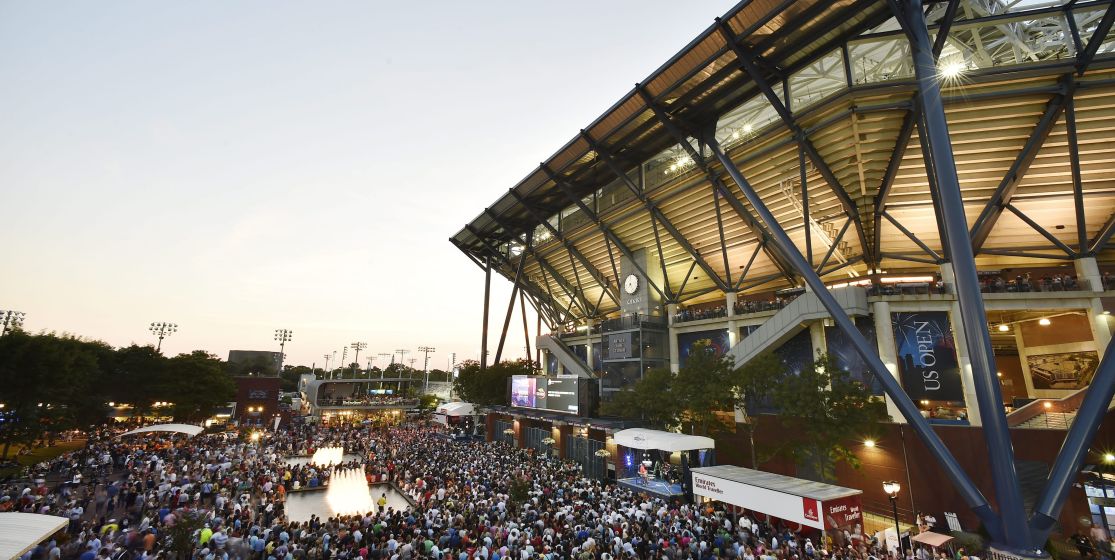The 2017 of the US Open is the 40th played at Flushing Meadows. Let’s look back on the history of a stadium where the noise and the smell of grease have always been, but which is far less criticized than it used to be…
700.000 spectators during the fortnight, a Central court welcoming 22 547 people, with a 6,5 tons steel roof built for the modest cost of 134 million euros…In 2017, who can still criticise Flushing Meadows ? For almost 20 years, many have done so. The disgrace of the Grand Slam family, it was the dirtiest, the messiest, the most rock and roll, the less respectable, the hardest to get to (40 minutes on public transportation). Which may be normal, in a way, for a complex built in a park in Queen’s on the ruins of an old theater - a « valley of ashes », as the American writer Francis Scott Fitzgerald described in The Great Gatsby -, just a stone’s throw away from LaGuardia airport. Everything derived from a dilemma which occurred in 1977. When the US Championships decided to modernize, the oldish West Side Tennis Club in Forest Hills, which had welcomed the tournament since 1915, refused to make the necessary investments. The American Federation then had to find a solution in only a few months. This is how this huge stadium made of metal and concrete was born, so hastily. The monument perfectly symbolises the American excessiveness and the new dimension in which tennis was brought along the seventies. Contested for its gigantism, Flushing Meadows became the biggest stadium in the world. « Unless you’re in the boxes, then said Pierre Darmon, the ATP Tour vice-president in Europe at the time. It’s too big, it smells bad, it’s noisy…it was built the American way. » In 1990, a spectator who sitting at the very top of the stadium even sent the tournament’s organizers a letter to complain about not having seen anything : « I think Agassi was playing because I thought I noticed a fluorescent ball jumping around on the court. »
Dinosaurs, traffic and atomic bomb
A little « too much », in the end, for the numerous specialists, troubled by the smells of barbecue which took over the alleys, and shaken by the throbs of the planes taking off - every ten minutes until 1991. With the constant coming and going of the spectators in the stands, players had the impression of working in the main hall of an agricultural show on the opening day. In 1978, the place seemed perfect for Jimmy Connors. « In this tournament, I wouldn’t bow in front of anyone », said the star whose violent game seemed to perfectly fit the local atmosphere. « The noise and the terror, the DecoTurf which breaks your legs…this tournament is an extreme test for journalists and for the nerves, it can only be won by a tough guy », then wrote Denis Lalanne in L’Equipe, ten years before comparing the stands to a « giant trashcan ». Because « Flushing » has its own personal enemies. After a premature defeat in 1985, Kevin Curren, who always preferred the muted atmosphere of Wimbledon, simply suggested to « drop an atomic bomb on this bloody place ! » In 1986, even John McEnroe was disqualified from the doubles tournament for having lost himself in the traffic on his way to the stadium. The beginning of the end ? A little bit : a year later, the city of New-York started a gentrification around the place by building a zoo and a playground based around dinosaurs close to it. Besides watching the matches, the spectators can now sit, read or have a picnic. Then, in 1997, as a final gesture of appeasement, the Louis Armstrong Central Court made way for the Arthur-Ashe Stadium, which is even bigger, but much cleaner. Some players, like Noah, seem to regret the disappearance of the noisy atmosphere. « We don’t feel the madness of New-York, or the hardness of the city anymore. » The Frenchman was the last one to dare.
By Julien Pichené






